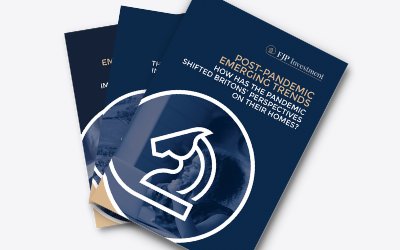Understanding Property Ownership in the UK
The UK property market is one of the most attractive in the world, whether you’re a first-time buyer or an experienced investor. But understanding the different types of property ownership is essential if you’re thinking about getting involved. You might have heard terms like “freehold,” “leasehold,” or even “commonhold,” but what do they really mean? Each form of ownership comes with its own rules, rights, and responsibilities that can affect everything from how long you own the property to what changes you’re allowed to make.
Property ownership in the UK can seem complicated, but it all boils down to how you hold the title to the property and what rights come with that title. These forms of ownership have developed over hundreds of years, and while they all relate to the same basic concept—owning a piece of land or a home—they come with different legal implications.
In this guide, we’ll break down the most common forms of ownership in the UK to help you understand which one might be best for you. Whether you’re looking for your forever home or a savvy investment, knowing your options is crucial.
Freehold Ownership: Full Control Over Your Property
Freehold is often seen as the gold standard of property ownership in the UK. When you own a freehold property, you own the building and the land it stands on indefinitely. In simple terms, you are the outright owner, giving you complete control over the property.
What Freehold Ownership Entails
As a freeholder, you won’t have to worry about paying ground rent, service charges, or dealing with a landlord, because you are responsible for everything related to your property. This includes maintaining both the interior and exterior, the roof, and any gardens or outdoor spaces that come with it.
The main advantage of freehold is the level of autonomy it offers. You can make alterations to your home without seeking permission from a landlord, although you’ll still need to adhere to planning laws and regulations. Additionally, freehold properties often appreciate in value more than leasehold properties, making them a preferred option for long-term homeowners and investors.

Common Types of Freehold Properties
- Detached homes: These are most commonly freehold, especially in rural and suburban areas.
- Semi-detached and terraced houses: These are often freehold as well, though leasehold versions do exist.
Is Freehold the Best Option for You?
Freehold is ideal if you’re looking for long-term ownership and maximum control over your property. However, it often comes with a higher upfront cost, and you will be responsible for all maintenance. This can be both time-consuming and expensive, especially for larger homes. But for many, the advantages of not answering to a landlord or paying additional fees make it worth the investment.
Leasehold Ownership: A Long-Term Lease Agreement
Leasehold ownership is different from freehold in that you don’t own the land the property stands on—you lease it for a set period of time, which can be anywhere from 40 to 999 years. The actual freeholder (sometimes called the landlord) owns the land, and you have a legal right to live in the property for the duration of your lease.
What Does It Mean to Be a Leaseholder?
As a leaseholder, you are essentially a tenant with a long-term lease. This means that you’ll need to pay annual ground rent, service charges, and sometimes a contribution to maintenance costs for the building or communal areas. The length of your lease can significantly affect the property’s value. A property with a short lease (usually less than 80 years) will be harder to sell and might be worth considerably less.
Key Considerations for Leasehold Properties
- Extending the lease: If the lease on your property is below 80 years, it can become increasingly difficult and expensive to extend. In some cases, leaseholders have the right to buy the freehold of the property, either individually or collectively with other leaseholders, under certain legal provisions.
- Ground rent and service charges: These costs can vary widely depending on the property and location. Some leaseholders find themselves paying significant amounts, which can increase over time.
Typical Leasehold Properties
- Flats: Most flats in the UK are sold as leasehold properties because they share common areas like stairs, lifts, and gardens. The freeholder usually retains control over the building’s structure and communal areas.
- Some new-build houses: In recent years, there has been controversy over new-build houses being sold as leasehold, often with high ground rents and onerous terms. However, reforms have been introduced to address these issues, making it less common.

Is Leasehold Right for You?
Leasehold can be a practical option for those who want to live in a flat or don’t mind paying ground rent and service charges. However, it’s crucial to be aware of the length of the lease and any additional costs before purchasing.
Commonhold and Share of Freehold: A Modern Twist on Property Ownership
Commonhold is a relatively new type of property ownership in the UK, introduced in 2002 as an alternative to leasehold, particularly for flats. In a commonhold structure, each flat owner owns their individual unit outright (like a freehold) and shares responsibility for the communal areas with the other owners in the building. This system is designed to give more control to property owners and eliminate the complexities and costs associated with leasehold ownership.
What Does Commonhold Mean?
In a commonhold, there is no overarching landlord or freeholder. Instead, the owners of each unit form a commonhold association, which manages the building and its common areas. Each owner has a say in how the building is run, including decisions about maintenance and service charges.
Benefits of Commonhold
- More control: Since there’s no landlord, owners collectively decide how to manage the property.
- No ground rent: One of the major benefits is that you won’t have to pay ground rent or face lease extensions.
- Transparent costs: Service charges are typically more transparent in a commonhold arrangement, as they are determined by the owners themselves.
Despite these advantages, commonhold has not become widely adopted in the UK. Many people still prefer leasehold or freehold arrangements, possibly because the commonhold system requires owners to be more actively involved in the building’s management.
Share of Freehold
This is another alternative to standard leasehold ownership, and it’s common in converted buildings with multiple flats. Under this arrangement, the flat owners share ownership of the freehold for the entire building. Like commonhold, it gives more control to the individual property owners, but it operates within the framework of the leasehold system.
Joint Ownership: Navigating the Details of Shared Property
Joint ownership allows more than one person to share ownership of a property. This is a popular option for couples, family members, or friends buying together, but it’s important to understand how this type of ownership works.
Joint Tenancy vs. Tenants in Common
There are two main types of joint ownership:
- Joint Tenancy: In a joint tenancy, each person owns the entire property jointly. This means that if one owner dies, their share automatically passes to the other owners without going through probate. This is the most common form of ownership for couples.
- Tenants in Common: With tenants in common, each owner holds a specific share of the property. These shares don’t have to be equal, which can be useful if one person is contributing more financially than the other. Unlike joint tenancy, if one person dies, their share of the property is passed on according to their will, rather than automatically to the other owner(s).
Which Option Is Best for You?
If you’re buying a property with someone else, joint ownership can be a great way to share the financial burden. However, it’s crucial to choose the right form of joint ownership based on your circumstances. Joint tenancy is ideal for couples who want to ensure the property passes automatically to their partner, while tenants in common is better suited for those who want to pass on their share to someone else.
Choosing the Right Ownership for Your Needs
Navigating the various types of property ownership in the UK can be tricky, but understanding the differences is key to making an informed decision. Whether you’re drawn to the autonomy of freehold ownership, the lower upfront costs of leasehold, or the modern structure of commonhold, each option has its pros and cons.
For investors, choosing the right ownership type is even more critical. Freehold properties may offer better long-term value, but leasehold flats can be more affordable and provide a foot in the door for those entering the market. As Jamie Johnson of FJP Investment suggests, “In the current market, being savvy about the type of ownership is just as important as finding the right property. It’s not just about what you own, but how you own it.”
At the end of the day, your decision will depend on your personal situation, financial goals, and how much involvement you want in the ongoing management of your property. Whatever type of ownership you choose, make sure to do your homework and consult legal professionals if necessary to ensure that your property is a sound investment for years to come.
ARE YOU READY TO START INVESTING?
Subscribe to our mailing list now for exclusive deals, investment guides and the latest information from the property market.







